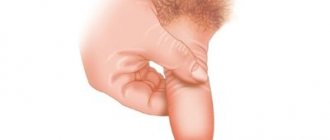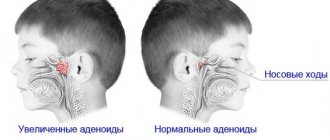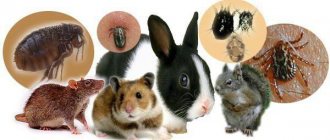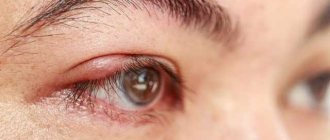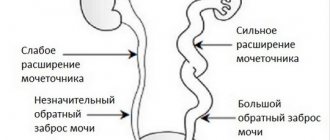Redness of the glans penis is considered a common complaint with which men seek help from a specialist. The cause of this pathological condition usually lies in infections that progress in the genitourinary system of the body.
Redness of the glans in men is often accompanied by the appearance of additional symptoms such as itching, pain, discomfort and problems with potency. This disease requires mandatory treatment, otherwise dangerous complications such as necrosis of the head and even cancer may develop.
Causes of pathology
There are many reasons that can cause redness of the glans penis, ranging from urogenital diseases to fungal infections.
Medical practice shows that most often this pathology is provoked by the following factors:
- Allergic reaction. Using detergents, wearing synthetic clothing and cosmetics containing chemicals causes men to develop allergic reactions. A man complains of redness of the head of the penis combined with itching and burning. To prevent and eliminate such manifestations, it is recommended to refuse to use detergents with fragrances and dyes, and to give preference to clothes made from natural materials. In addition, it is best to give preference to natural skin moisturizers and latex-free condoms.
- Increased dryness of the skin. Unpleasant burning, itching and redness of the foreskin of the penis can occur in men when masturbating or wearing tight underwear. It is possible to alleviate the patient's condition with the help of moisturizing creams and lubricants, which contain natural ingredients. At home, you can use Vaseline, which does not contain dyes or flavors.
- Psoriasis. Many men with this diagnosis suffer from redness and peeling of the skin of the foreskin. This symptomatology noticeably worsens during sexual intercourse or during masturbation, which causes severe discomfort to the man. You can get rid of such symptoms by following the rules of personal hygiene, using moisturizing creams and products containing vitamin A.
Hygiene
Violation of personal hygiene rules can provoke redness of the glans penis. In order to eliminate such a problem, a man needs to monitor the cleanliness of his penis and keep it clean. It is possible to keep the skin healthy and prevent its wear and tear with the help of special creams that should be used to lubricate the skin of the organ.
[flat_ab id=”4"]
Redness on the glans without itching can appear with mechanical damage to the penis or with frequent sexual intercourse. This symptom may appear when performing piercings and other similar manipulations with the penis.
If a man has redness of the head and foreskin, the reasons may be the following:
- the accumulation of smegma in the foreskin is considered a favorable condition for the proliferation of pathogenic microorganisms;
- Promiscuous sexual activity, unprotected and oral sex;
- diabetes mellitus, in which the urine contains sugar, which becomes an ideal environment for the growth of bacteria;
- the presence of concomitant pathologies in a man, for example, trichomonas or gonorrheal urethritis.
Redness of the head of the penis often becomes a sign of a dangerous disease that can lead to unpleasant consequences. It is for this reason that if such a symptom appears, it is necessary to seek advice from a specialist.
General signs of penis illness
Diseases of the genital organs are a large group of pathologies that are accompanied by a variety of clinical manifestations. It is impossible to clearly define a list of signs and symptoms that would correspond to all diseases of the genital organ without exception.
Symptoms of diseases of the penis, which are present in certain combinations for each pathology:
- Swelling of the soft tissues of the reproductive organ, head, foreskin, scrotum;
- Enlarged lymph nodes in the groin, their pain;
- Pain in the phallus during erection and during rest;
- Discomfort or pain during sexual intercourse (such a symptom may indicate several pathologies of male dignity that occur simultaneously);
- Erectile disfunction. This term represents a group of symptoms that can occur together or separately. These include a sharp decrease in potency, a decrease or absence of sexual desire, uncontrolled ejaculation, poor erection, which makes it impossible to have sexual intercourse, etc.;
- The presence of physiological accumulations under the foreskin - mucus, whitish plaque, pus;
- Inflammation of the head of the reproductive organ, accompanied by swelling and pain;
- Disturbance of the urinary process. During the process of emptying the bladder, a man feels pain, burning and stinging;
- Deformation changes in the phallus, for example, curvature of the organ to the right or left, shortening, etc.;
- Tumor formations that can be palpated or determined visually, for example, in one place the penis has become larger; swelling is felt on palpation.
It’s worth knowing: any of the listed symptoms is a reason to visit a medical specialist and get diagnosed. Ignoring alarming signs leads to complete impotence, reproductive dysfunction with subsequent infertility and other diseases.
Possible diseases
Often, redness on the penis is a sign of certain pathologies that progress in the male body.
- At the initial stage of development of candidal balanoposthitis, a man complains of irritation of the head of the penis, the appearance of small cracks, itching, an unpleasant odor and a white coating. When the pathology passes into an advanced form, wounds and small ulcers may form on the frenulum, tearing the entire length of the trunk. Sometimes yeast can spread to the groin and anal area. Candidiasis balanoposthitis is characterized by a recurrent course, and is especially aggravated by unprotected sexual intercourse or by not following the rules of personal hygiene.
- An unpleasant viral disease that may be accompanied by redness of the glans penis is considered genital herpes. Its characteristic symptom is irritated mucous membrane of the penis, on which bubbles with cloudy liquid appear. In addition, this disease is complemented by a pronounced pain syndrome in the affected area. A particular danger to a man’s health is the ulcerative form of secondary genital herpes, which is accompanied by burning and discomfort in the urethra when urinating.
- Contact dermatitis is considered a common phenomenon among boys and adolescents. This disease is characterized by redness of the glans penis, swelling of the organ and itching of varying intensity. Allergens can include latex, linen, powder and personal hygiene products.
- Another fungal disease that can be diagnosed in men is athlete's foot. With this pathology, the appearance of flaky spots in the groin is observed, which can be supplemented by minor inflammation near the head of the penis. Typically, this pathological process is localized on the pubis, the inside of the legs and buttocks.
Redness on the penis may be a manifestation of the initial stage of pathologies such as gonorrhea or syphilis. Typically, such diseases are accompanied by discharge from the urethra, the formation of ulcers and pimples on the surface of the penis.
[f[flat_ab id=»5"]r>
Symptoms of pathology
In medical practice, redness of the glans penis in men is referred to as “balanitis.” Its characteristic manifestation at first is irritation of the head of the penis, but as it progresses the following symptoms may appear:
- hyperemia of the glans penis and foreskin;
- discharge mixed with pus that has an unpleasant odor;
- pain, itching and burning, which are especially pronounced when the genital organ is affected by an infection of fungal origin;
- swelling of the external opening of the urethra;
- the formation of plaque on the head of the penis or foreskin, behind which you can see ulcers;
- severe pain when touching the head of the penis and palpating it;
- itching and burning during urination;
- rise in body temperature;
- increase in the size of lymph nodes.
With further progression of balanitis and the absence of effective treatment, bleeding, headaches may appear and the patient’s general well-being may deteriorate.
Diagnosis and treatment methods
In order to correctly diagnose and avoid the development of dangerous complications, you need to seek help from a specialist. The patient will be prescribed the necessary diagnostic procedures and based on them, a suitable course of treatment will be selected.
Medicines
The choice of one or another method of therapy is determined by the stage of the disease and its neglect. The following conservative methods can be used in treatment:
- Antibacterial treatment is aimed at destroying the pathogen. Usually, for the treatment of pathologies of fungal origin, potent drugs of the group of macrolides and fluoroquinolones are used, and for syphilis, the use of penicillin antibiotics is indicated.
- Elimination of a viral infection is carried out using medications that have a suppressive effect on the virus. Medicines are prescribed in the form of tablets and ointments, and Acyclovir and Valaciclovir are considered the most effective drugs among all their variety.
- Antifungal treatment helps relieve a man of such unpleasant symptoms as itching, burning and white plaque. The use of such medications in the form of ointments and tablets is prescribed.
- The use of solutions that have a pronounced antimicrobial effect is indicated. To eliminate external symptoms, you can treat the head of the penis with ointments and creams that accelerate wound healing. At home, it is recommended to use drugs such as Methyluracil and Levomekol.
- If the cause of redness of the glans penis is trichomoniasis, treatment is carried out with the help of antiprotozoal drugs. To restore the body's defenses, immunomodulatory drugs are prescribed. You can get rid of an allergic reaction by treating with corticosteroids, for example, Triderm or Advantan ointment.
Treatment of male diseases
After determining the diagnosis, the doctor draws up a treatment regimen; mild forms of the disease are treated using physiotherapy and medications; under the constant supervision of a specialist, you can treat yourself at home. In advanced, congenital forms of genital diseases, surgical intervention is required.
Medications
In the treatment of urological diseases in men, drugs are used that fight pathogens, eliminate unpleasant symptoms, and help strengthen and restore immunity and erectile function.
Main groups of drugs:
- antiseptic solutions - Miramistin, Chlorhexidine, used to wash the head of the penis, remove plaque from the foreskin;
- antibiotics – Amoxicillin, Cefuroxime;
- antifungal drugs - Nystatin, help with candidal urethritis, prostatitis;
- antiviral agents - Acyclovir, prescribed for exacerbation of genital herpes;
- drugs to improve potency - Phentolamine, Sildenafil, Tentex Forte, drugs with testosterone, L-arginine - more ways to increase potency;
- alpha-blockers - Cardura, Omsulosin, are necessary to improve the condition of prostate adenoma;
- immunomodulators – Pyrogenal, Reaferon.
Pyrogenal is an effective immunomodulator
After completing antibacterial therapy, you need to drink Bifiform, Ribomunil, other probiotics, prebiotics; vitamin complexes will help strengthen the immune system. If incontinence occurs, special pads should be used that quickly absorb fluid.
Important!
Uncontrolled use of drugs to improve potency can cause serious problems with erection, disruptions in the functioning of the cardiovascular and nervous systems, and impaired liver function.
Surgical methods
In the absence of a therapeutic effect after drug therapy, in advanced forms of urological problems, or congenital anomalies, surgery is performed. In some cases, surgery can be done at the request of the man.
Types of andrological operations:
- circumcision - circumcision of the foreskin for phimosis; in some cases, men do it for hygienic reasons;
- restoration of functions in the testicular vein with varicocele;
- penile prosthetics - male prosthetics are performed for organic forms of erectile dysfunction, which allows in 95% of cases to achieve a noticeable positive result;
- change in the length and thickness of the penis - lengthening is carried out by reducing the hidden perineal section, special implants are used for thickening;
- removal of malignant and benign tumors.
One of the best means for treating and preventing adenoma is regular prostate massage, which is carried out through the rectum; the procedure should only be performed by a qualified specialist. Contraindication: suspicion of prostate tumors.
What complications can there be?
To effectively treat redness of the glans and foreskin, you must consult a doctor at the first sign.
Otherwise, cicatricial phimosis will cause discomfort. This is a pathology that is characterized by deformation of the tissues of the penis. As a result of constant inflammation and deformation, scars form on the tissues. The foreskin gradually narrows, causing the development of phimosis.
In the absence of therapy at this phase, paraphimosis develops - a pathological condition in which the head is pinched. The condition is usually accompanied by painful swelling.
If the form is advanced and without timely treatment, surgical intervention may be required. Also a serious danger is posed by atrophy of the head receptors with a decrease in sensitivity, which, in turn, leads to erectile dysfunction and decreased libido. This negatively affects the quality of sexual life.
With prolonged redness of the head of the penis and foreskin, without timely medical intervention, urethritis develops. Gradually, the infection leads to the development of complications: prostatitis, cystitis, pyelonephritis, orchiepididymitis.
Causes of the disease
The main factors for the spread of infection are:
- poor hygiene;
- the use of antiseptic solutions after sexual intercourse;
- frequent washing of the genitals with soap, leading to skin irritation;
- mechanical damage to tissue integrity;
- uncontrolled treatment with antibacterial drugs;
- anatomical features of the structure;
- hormonal imbalances;
- the presence of certain autoimmune diseases;
- infections.
The disease can be caused not only by sexual (genital) contact, but also by oral and anal contact. Sometimes six months pass before the first symptoms appear.
Symptoms
- Burning in the genital area.
- Pain during sexual intercourse, when urinating.
- Swelling, sharp and burning sensation.
- Exposing the head becomes difficult and pain occurs.
If you have unpleasant symptoms, there is no need to self-medicate and try to find an ointment or gel on your own that will relieve burning and swelling.
This always leads to the development of even greater complications, and the infection goes deep into the genitourinary tract.
How to treat?
Prevention of the disease is the best way to avoid serious consequences. And a significant role in this belongs to compliance with the rules of personal hygiene.
If you notice the first signs, it is important to immediately consult a doctor who will prescribe the correct treatment. A paid urologist will conduct an examination and prescribe appropriate treatment.
https://doctor-anna.ru/publikatsii/pokrasnenie-na-golovke-i-krajnejploti/
Sores on the glans in men: photo of a wound on the penis and how to treat sores
The male reproductive organ is considered very vulnerable due to its external location. Any urologist will confirm that ulcers on the penis definitely appear in advanced forms of the disease and when earlier symptoms are ignored. Men are in no hurry to consult with specialists, hoping that any formations, sensations and ambiguities will disappear from the genital organ by themselves. However, the disease must be adequately treated, and the penis in this situation is simply one of the organs of the male body.
Damage to the skin on the penis always indicates pathology. But there are several types of reasons for the occurrence of pathology. Of course, this division is conditional.
- Skin damage due to an allergic reaction;
- Formation of ulcers due to a venereal disease;
- A lesion that occurs against the background of inflammation of the genitourinary system;
- Ulcerations due to neglect of personal hygiene rules.
Depending on what microorganism caused the violation of the integrity of the epithelium, along with ulcers you can observe:
- Increased body temperature (manifestation of the inflammatory process);
- Enlarged inguinal lymph nodes;
- Rash, pain when touched and pulling sensations in the genitals;
- Discharge from their urethral opening;
- Excessive urge to urinate;
- General weakness, chronic fatigue and lack of appetite.
Itching, burning, a desire to scratch the resulting rashes on the shaft and head of the penis, as well as a painful ache in the scrotum - all these signs indicate that the reproductive system is affected, and the issue of diagnosis should be taken seriously.
Urologists note that shallow ulcerations most often affect the head. The general parameters of the defect are also important - the depth and width of the ulcers. There are:
- Deep and shallow lesions of the epidermis;
- Large, medium and small ulcers;
- By localization - in the groin, on the shaft, ulcers on the head of the penis.
We suggest you familiarize yourself with: Voltaren (tablets, injections, suppositories, gel, emulgel, patch, tablets)
Sometimes an ulcer forms on the frenulum of the penis.
White sores
With some diseases of the reproductive system, small white sores appear on the penis. Most likely, white ulcers indicate a third-party pathogen, but do not cause inflammation of the flesh. Blistering of the skin and accumulation of pus, as well as subsequent ulceration of the organ - everything happens quickly and requires immediate contact with a specialist.
Red sores
When a rash appears and red sores form, the cause is most likely due to an inflammatory process. It may be a side effect, but it is the inflammation that you need to pay attention to first.
Red ulcers often become weeping, with water or purulent substrate pouring out of them. By the way, it is worth remembering that ulcers themselves are a symptom, and not a separate disease.
Let's move on to a substantive conversation about possible variants of diseases in order to understand how dangerous it is to find ulcers on your penis.
Herpes
This is a disease transmitted through sexual contact, and in case of exacerbation or primary manifestation, all personal hygiene items of the patient (towel, bed and underwear) become dangerous. Genital herpes is a type 2 infection and is somewhat different in symptoms from the usual virus that affects the face or other parts of the body.
Most often, bursting blisters turn into herpetic ulcers on the head of the penis. The burst skin on the blisters becomes an open erosion and increases in size. After infection, it appears from 2 days to 2 weeks. If blisters appear in the urethra, the disease is called herpetic urethritis.
The main symptoms of genital herpes:
- Body temperature rises, fatigue appears, and the body’s incapacity increases;
- Pain appears in the muscles and joints;
- The first bubbles appear on the head, quickly increasing the area of damage to the organ;
- The lymph nodes in the groin become enlarged, and the process of urination becomes very difficult.
Any discharge from the urethra causes pain, and burst bubbles form a crust at the edges, injuring the delicate skin of the penis and foreskin.
Fungus
The most famous fungus is Candida, and it is because of it that a man becomes infected with thrush (candidiasis). But in fact, the diversity of fungal microorganisms is very large - up to 600 subspecies.
Many of them are oncogenic, and several dozen species parasitize the genital organ.
You can become infected with the fungus during sexual intercourse from a sick partner, and through household objects that a person with recurrent fungal infection held in his hands. Symptoms of fungal infection:
- The first is itching in the head, spreading to the shaft of the penis over time;
- Redness of the penis and pubic skin;
- Pain during urination;
- Burning and pain during sexual intercourse;
- The appearance of a rash on the head and foreskin.
To treat a fungus, you will have to undergo a number of tests to determine the type of fungus. Only in this case will the therapy be effective.
Syphilis
The first reveals a single lump, which becomes inflamed at the end of the first week. The chancre becomes bluish in color, the vessels and lymph nodes around it become very inflamed, which causes noticeable pain and even makes it difficult to move. The end of the first stage is the appearance of a syphilitic rash;
The second stage - the rash begins to change, and ulcers appear and grow around the chancre. They can combine with each other, increasing the area of the affected area on the penis. Ulcers on the glans and foreskin can be:
- Pink red spots that do not protrude above the skin of the organ;
- Conical growths with peeling of the top of the growth;
- Pustular rash - growths form with internal cavities filled with pus.
The capabilities of modern medicine make it possible to successfully treat syphilis if it has not progressed to the third stage (neurosyphilis), which sometimes lasts for decades and brings significant suffering, disability, brain damage and death.
Gonorrhea
Another STD, the causative agent of which is gonococcus, can cause and manifest sores on the penis. The disease is serious and leads to infertility, as it is often complicated by the addition of other infections or inflammation.
The incubation period after transmission of gonococcus from a sick person to mucous surfaces to a healthy person is 15 days. But the first symptoms in men can appear within a week.
Often the disease becomes chronic after a couple of months, with periodic exacerbations. Symptoms:
- Burning, itching, discomfort during urination;
- Purulent discharge when pressing on the head;
- Swelling of tissues and inguinal lymph nodes;
- An ulcerative rash appears when secondary infections occur.
In this case, you need to focus on the discharge, and not on the rash, which may not appear.
Balanitis
This disease can be either acquired or congenital. Inflammation of the head of the penis often spreads to the foreskin (balanoposthitis). The main signs of balanitis:
- Itching, redness and burning on the head of the penis;
- There is swelling and swelling of the head;
- Discomfort and discharge of pus during urination;
- Stinging, nagging pain, discomfort when walking;
- Enlarged lymph nodes in the groin;
- Ulcers on the head and unpleasant odor of discharge.
In acute and chronic forms, ulcerative balanitis is a rather serious disease, but it is treatable and completely eliminated, unlike gonococcal infection or syphilis.
Chlamydia
Chlamydia is not a virus or bacteria, but a parasite. In men, they are determined only through tests, and most often the symptoms of urogenital chlamydia literally copy cystitis, prostatitis and urethritis. Chlamydial infections have terrible consequences:
- Damage to joints;
- Infertility;
- Vascular disease;
- Damage to the organs of vision.
In this case, ulcers are not the main symptom, and not even permanent. It all depends on the severity of the lesion and the speed of spread of chlamydial parasitic disease.
Chancroid
Distribution and transmission of chancre occurs only through sexual intercourse. Infectious venereal disease is not common in the Russian Federation and is considered “imported”. The chancroid stick, transmitted through sexual contact, has an incubation period of up to 5 days in men. Symptoms:
- A stain appears;
- Swelling; a nodule is formed;
- Over time, the node becomes a blister and fills with pus;
- As soon as it opens, a painful ulcer of different diameters forms;
- Soft chancroid is more painful than hard chancroid, which appears with syphilis.
Pus, separating from the increasing and deepening chancre, gives rise to the same ulcers around the main ulcer. Treatment helps clear the bottom of the chancre and heal the edges before scarring.
A tumor of the penis is an uncommon occurrence in medical practice. However, the appearance of any painful (or painless) neoplasm on the penis in any form, namely:
- Warts;
- Bubbles;
- Thickening of the skin and changes in its color;
- The appearance of a bleeding ulcer;
- White or pink spots are all indicators that an appointment with a urologist is necessary in the near future.
Using various diagnostic measures, the doctor will determine what nature the new growths have. At an early stage of detection, the tumor can be cured or removed, with further monitoring of the patient's condition.
A wound on the penis sometimes appears due to external influences. But it is still necessary to check wounds on the penis, especially for infection or other contamination. Microorganisms often like to parasitize on open wounds, which means that injury can trigger the appearance of ulcers due to infection and weakening of the control of the immune system.
Diagnostics
Diagnosis of any disease implies:
- Submission of biomaterial for laboratory tests;
- Collecting a detailed medical history;
- Passing hardware examinations.
Whatever diagnostic method is prescribed by the doctor, it is necessary to undergo it, because only an accurate study will allow one to separate viruses from bacteria and fungi, infections from inflammation, and one’s own microflora from introduced pathogenic ones.
Causes of redness of the penis
A change in the color of the head of the penis indicates the development of balanitis. This pathology is an inflammation of the surface layer of the epidermis of the foreskin, which then spreads to the head of the penis.
The nature of this disease can be very different. In fact, balanitis is a secondary pathology. Its origins can be identified only after a detailed examination of the patient.
There are two types of balanitis:
- Infectious. This type of pathology develops against the background of genital herpes, chlamydia, trichomoniasis, syphilis, gonorrhea and fungus.
- Non-infectious. The disease develops under the influence of unfavorable external and internal factors: mechanical injuries, poor personal hygiene, allergic reactions, dermatological diseases, metabolic disorders in the body.
Balanitis is dangerous because in the absence of proper treatment, its manifestations will only intensify. As a result, individual foci of irritation on the penis will merge into one large spot, on which abscesses and areas of tissue necrosis will subsequently form. Moreover, at the last stage of the disease, medications in most cases become ineffective. Doctors have to cope with the consequences of pathology with a scalpel.
Acute infectious balanoposthitis
If the head and foreskin of an adult are red, then with a high degree of probability an inflammatory process develops in his body. The cause of the pathology is most often the appearance of pathogenic organisms on the head of the penis, but it can also be transmitted through sexual contact.
Such symptoms in men often appear with the following infectious diseases:
- Syphilis. This is one of the most dangerous sexually transmitted infections. Its causative agent is Treponema pallidum. Today doctors can easily cope with this disease, but there was a time when thousands of people died from it.
- Gonorrhea. A disease transmitted through sexual contact. Occurs when the genitals become infected with gonococcus. Characterized by inflammation of the mucous membranes of the genital tract. Less commonly, the urinary tract and rectal mucosa become infected. The disease is acute, but without appropriate treatment it quickly becomes chronic. This pathology can cause infertility.
- Ureaplasmosis. This is another infection transmitted during sex. It is caused by ureaplasmas, which are classified as opportunistic microorganisms. That is, they can be found in healthy people.
- Trichomoniasis. The pathology is a typical venereal infection. It affects the mucous membranes and very quickly causes their erosion.
- Chlamydia. This is a sexually transmitted infection, considered one of the most common. The reason for its wide distribution is its asymptomatic course.
Treatment of inflammation of the foreskin
The basis for treating inflammation of the foreskin in men is proper hygiene. In case of active disease, you need to wash the genital organ with water (preferably with weak antiseptic solutions) several times a day. If it is difficult to retract the foreskin due to developed edema, there is no need to try to expose the head with effort: this will lead to the formation of microcracks into which infection will penetrate.
At the initial stage of inflammation of the foreskin, treatment at home may be limited to hygiene procedures. But the patient cannot independently assess the degree of progression of the pathology and prescribe the correct treatment, so it is not worth resorting to this method by default.
After consulting a doctor, the patient will receive a list of instructions on how to treat inflammation of the glans and foreskin in men , which will help to ensure that the inflammation is dealt with and prevent it from becoming chronic. This requires the use of medications.
Drug therapy
Drug therapy involves the use of drugs to relieve inflammation, eliminate infections (bacterial and fungal), and reduce the severity of symptoms.
With advanced balanoposthitis, oral antibiotics are required along with the use of topical agents. In most cases, it is enough to use creams and ointments, lubricating the foreskin and glans penis several times a day. At night, you can apply ointment under a compression bandage.
In case of phimosis or severe edema, when it is difficult to expose the head of the penis, you need to draw a portion of the ointment into a syringe without a needle and insert it under the foreskin.
Painkillers and non-steroidal anti-inflammatory drugs are used as symptomatic therapy.
Surgical treatment
When the foreskin is inflamed , surgery can be used. But it is not a method of treatment: inflammation is eliminated by conservative methods, and surgery is used to prevent relapses of the pathology.
Surgical treatment of diseases of the foreskin in men involves excision of the foreskin: circumcision or circumcision.
The method is used for phimosis and often recurrent balanoposthitis.
Alternative medicine
Traditional methods of treatment involve the use of decoctions of medicinal plants externally for intimate hygiene. Plants must have anti-inflammatory, antimicrobial, and anti-edematous properties.
Can plant decoctions be as effective as medications is a question whose answer cannot be universal. With mild inflammation, alternative medicine can be useful. But any herbal-based products are strong allergens, so they should not be used uncontrolled without first consulting a doctor. Moreover, the inflammation of the frenulum of the foreskin may be the result of an allergic reaction.
Why does irritation occur?
The main reasons that can provoke inflammation of the foreskin include:
- insufficient personal hygiene;
- increased sweating;
- wearing synthetic underwear;
- allergic reactions;
- balanoposthitis or balanitis;
- candidiasis (thrush);
- sexually transmitted diseases;
- clinical types of scabies;
- diabetes;
- hypovitaminosis;
- eczema
Condom lubricants, scented soaps and intimate hygiene gels can cause allergies, which can cause irritation and itching of the foreskin. In this case, the man should stop using these products, replacing them with more gentle, hypoallergenic analogues.
Irritation of the foreskin: characteristic symptoms
The presence of inflammation in the male reproductive system is usually signaled by the following, single or complex, symptoms:
- pain during urination or during sexual intercourse;
- discharge from the urethra;
- burning and swelling of the head of the penis;
- rash, redness and dryness of the mucous membrane of the head;
- early ejaculation;
- excessive amount of smegma (a mixture of the secretion of the sebaceous glands of the foreskin, dead epithelial tissue and moisture), with the presence of an unpleasant odor;
- high body temperature;
- enlarged inguinal lymph nodes;
- excessive excitability
Prevention and treatment of foreskin irritation
To prevent inflammation of the foreskin, it is important for a man to observe daily hygienic care of the intimate area, as well as to avoid promiscuity. Immediately after sexual intercourse you should take a shower or bath.
For minor manifestations of irritation, the application of antiseptic agents, such as furatsilin solution or hydrogen peroxide, to the inflamed areas can weaken or eliminate negative symptoms. The procedure should be carried out two to three times a day, after basic hygiene care.
If the irritation and (or) itching of the foreskin is particularly intense, a visit to a doctor will help a man identify the cause of the disease and determine the method of treating it. To treat the disease, depending on the type of pathology, the patient may be prescribed special antibacterial and anti-inflammatory ointments, antibiotics, detoxification or immunomodulating drugs, etc.
If the irritation is caused by phimosis (narrowing of the foreskin), treatment of the disease may involve, among other things, surgery.
https://medaboutme.ru/zdorove/publikacii/stati/sovety_vracha/razdrazhenie_krayney_ploti_u_muzhchin_prichiny_i_lechenie/
Prevention
Since the main cause of inflammation of the foreskin in babies is the forced opening of the head, parents are categorically not recommended to do this. It is equally important to follow the rules of penis care and not touch it unless necessary.
In cases where inflammation is caused by an allergic reaction, it is important to identify and remove the allergen. In this case, you need to change the brand of diapers, washing powder and body care cosmetics. Linen should be chosen from high-quality natural fabrics. In case of food allergies, you need to avoid eating foods to which the reaction occurs.
If the causes of relapses are physiological in nature, you need to consult a doctor and subsequently strictly follow his recommendations.
What causes
Among the predisposing factors, phimosis should also be noted - a congenital narrowing of the opening of the foreskin in boys, which does not allow exposing the head of the penis. Sometimes the disease occurs due to local irritation of the tissues of the penis by rough underwear. In addition, the development of balanitis is facilitated by existing metabolic disorders, for example, diabetes, lack of vitamins and iron in the body, and allergies.
Another possible cause of this disease is an infection caused by bacteria or fungi. Infection usually occurs through sexual contact. In this case, the inflammation spreads to the head through the urethra.
Symptoms of balanitis
The first manifestation of the disease is pain on the glans penis. Then swelling, redness, possible purulent discharge and an unpleasant odor appear. Urination is difficult. Sexual intercourse is accompanied by pain and does not bring satisfaction. The penis sometimes peels off and ulcers may appear on it. Sometimes balanitis is accompanied by inflammation of the inguinal lymph nodes, as well as general malaise.
What did the doctor order?
When the first signs of the disease appear, you should consult a doctor - a urologist or dermatovenerologist. If the disease is neglected, it can become chronic. In addition, advanced balanitis is fraught with a malignant neoplasm, or simply cancer.
Diagnosis of the disease is not difficult. Usually the doctor detects the disease during the examination of the patient. It is also necessary to conduct research to identify possible infection.
Depending on the causes of the disease, appropriate treatment is prescribed. However, in any case, it is important for the patient to maintain personal hygiene. In particular, regularly wash the penis with warm water and soap or an antiseptic recommended by your doctor, such as furatsilin. If balanitis is a consequence of phimosis, it is necessary to excise the foreskin (circumcision). In case of infection of the penis, a course of antibiotics is prescribed, taking into account the individual sensitivity of the patient. The use of anti-inflammatory ointments, such as tetracycline, is also indicated.
The word of traditional medicine
The use of traditional medicine has a good effect.
Experts recommend using the following infusions and decoctions of medicinal plants for treatment:
- Wash the penis 2-3 times a day with an infusion of St. John's wort herb (pour 1 tbsp of dry raw material with a glass of boiling water, leave for 15-20 minutes, strain, use warm);
- 2-3 times a day, wash the inflamed area (or make baths) with an infusion of string herbs and tricolor violet (1 tablespoon of a mixture of dry herbs in a 1:1 ratio, pour a glass of boiling water, leave for at least 30 minutes, strain);
- To wash the inflamed area, it is also recommended to use a decoction of young (green) oak bark (pour 1 tablespoon of dry crushed bark with a glass of water, boil over low heat for 15–20 minutes, strain, wash 2–3 times a day).
In addition, for balanitis, traditional healers advise applying fresh mashed aloe or plantain leaves to the penis 1-2 times a day.
